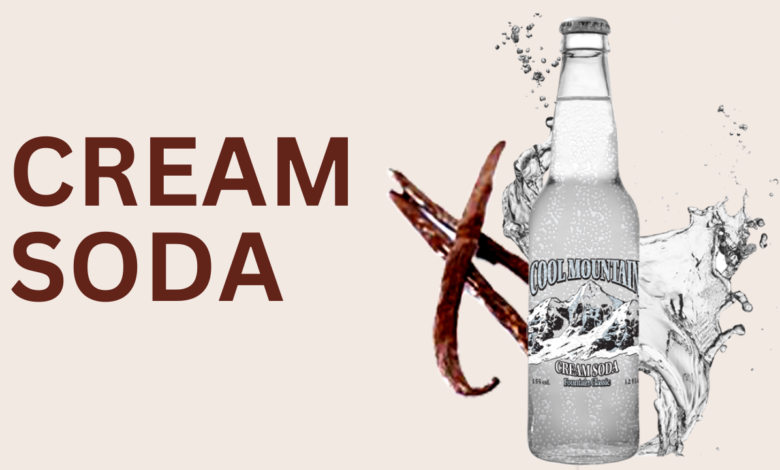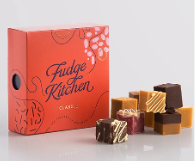
Cream soda has been a beloved beverage for centuries, with its sweet, smooth flavor capturing the hearts of soda lovers across the world. But where did this fizzy drink come from? And how has it become a staple in the soda industry today? Let’s dive into the fascinating history of cream soda, exploring its origins, evolution, and how it became a favorite choice for wholesale soda distributors.
The Origins of Cream Soda
The roots of cream soda date back to the early 19th century. Surprisingly, this beverage wasn’t always the carbonated treat we know today. The first versions of cream soda were non-carbonated and often homemade, featuring a blend of water, sugar, and various flavorings. It wasn’t until later that the fizz we associate with modern cream soda was introduced.
At the time, pharmacists were experimenting with soda fountains and flavored drinks to attract customers. Cream soda quickly became a popular choice because of its smooth, creamy flavor. As soda fountains grew in popularity, so did the demand for this unique drink.
Cream Soda in the 19th Century
In the mid-1800s, cream soda found its footing in the growing soft drink market. The addition of carbonation was a game changer. At that time, soda fountains became social hubs, and cream soda was a favored drink, often associated with luxury and indulgence.
As soda distributors and producers started to realize the potential of flavored carbonated drinks, the industry rapidly expanded. Soft drink companies, eager to capitalize on this new demand, began creating their own versions of cream soda, with different recipes, flavors, and production methods. This laid the groundwork for the many varieties of cream soda we see today.
The Role of Soda Fountains
Soda fountains played a pivotal role in the rise of cream soda. These establishments, often located in pharmacies or general stores, became popular gathering places in the late 19th and early 20th centuries. Soda jerks would mix various syrups and sodas, creating customized drinks for customers. Cream soda, with its rich and creamy taste, was frequently requested.
The popularity of soda fountains not only boosted the sales of cream soda but also encouraged the development of new soda flavors. By the early 1900s, many soda companies were experimenting with their own versions of cream soda, offering different flavor profiles ranging from vanilla to fruity variants. Wholesale soda distributors saw the rise in demand and began distributing the drink to a wider audience.
Cream Soda and the Evolution of Flavors
Initially, cream soda had a simple vanilla flavor. But as it spread in popularity, producers began to experiment with new and exciting flavors. Today, the term “cream soda” encompasses a wide range of flavors, including butterscotch, caramel, strawberry, and even tropical fruit variants.
For wholesale soda distributors, the versatility of cream soda offers a unique selling point. With so many flavors available, distributors can cater to different consumer preferences and tastes. This has helped cream soda maintain its position as a favorite in the soft drink industry, appealing to those who enjoy classic vanilla as well as those looking for something new.
The Global Expansion of Cream Soda
Although cream soda originated in the United States, its popularity quickly spread across the globe. Different regions developed their own interpretations of the beverage. In some countries, cream soda is a vibrant, fruity drink, while in others, it remains more aligned with the classic vanilla flavor.
In Japan, for example, cream soda often comes in bright, bold colors and is typically served with a scoop of ice cream, turning it into a delicious float. The beverage’s adaptability has made it a hit worldwide, and wholesale soda distributors have played a key role in making this fizzy treat available on an international scale.
Cream Soda and Modern Production Techniques
Over the years, the production of cream soda has evolved significantly. What was once a small-scale, homemade concoction has become a mass-produced product available in various formats, from cans to bottles, and served in restaurants and homes alike.
Today’s cream soda is produced with modern technology, ensuring consistency and quality across each bottle or can. The use of pure cane sugar in some premium brands has also helped maintain the beverage’s traditional appeal, while still catering to modern tastes. Wholesale soda distributors are increasingly opting for natural ingredients and classic recipes to meet the demands of consumers seeking high-quality beverages.
The Nostalgia of Cream Soda
One of the reasons cream soda remains popular is the sense of nostalgia it evokes. For many, cream soda is more than just a drink – it’s a reminder of childhood memories, summer days, and soda fountains of the past. This emotional connection has helped cream soda retain a loyal following, even as new soda flavors and brands enter the market.
Nostalgia marketing has become a significant trend, and many soda producers have leaned into this by offering retro packaging and classic flavors. Wholesale soda distributors who offer nostalgic brands of cream soda often see a strong demand from consumers who want to relive the past with every sip.
Cream Soda in the Craft Beverage Movement
In recent years, the craft beverage movement has taken off, with consumers seeking out small-batch, artisanal sodas that prioritize quality and unique flavors. Cream soda has found a place within this trend, with craft soda companies offering innovative takes on the classic drink.
Craft versions of cream soda often feature high-quality ingredients, such as pure cane sugar, and sometimes even organic or locally sourced components. These sodas are often distributed through specialized wholesale soda distributors, who focus on premium, niche beverages.
The Future of Cream Soda
The future of cream soda looks bright, with both mainstream and craft producers continuing to innovate and expand their product lines. As consumers become more conscious of ingredients, we can expect to see more organic and naturally sweetened options on the market. Additionally, the rise of international soda flavors may influence the development of new and exciting cream soda varieties.
Wholesale soda distributors will likely play a key role in this next phase, ensuring that cream soda remains a beloved option for both long-time fans and new consumers alike.
Conclusion: Cream Soda’s Enduring Legacy
From its humble beginnings as a homemade treat to its status as a global favorite, cream soda has truly stood the test of time. Its creamy, smooth flavor has evolved and adapted over the centuries, ensuring that it remains a staple in the soda industry. For wholesale soda distributors, cream soda continues to be a reliable and versatile product, catering to both nostalgic consumers and those looking for something new.
In an ever-changing beverage market, cream soda’s legacy endures, proving that sometimes, the classics really do never go out of style. Whether you’re sipping on a vanilla-flavored classic or trying a new fruity variation, cream soda remains a timeless delight.




